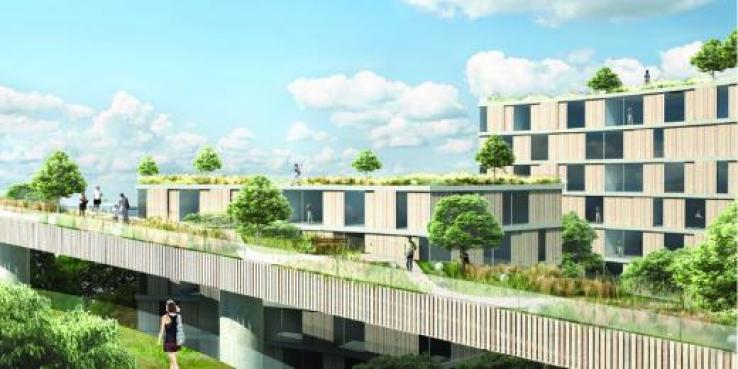In the June issue of The Urbanist, we explored the idea of removing Highway 280 north of 16th Street in San Francisco in order to reconnect the Mission Bay and Potrero Hill neighborhoods. This summer, the Center for Architecture presented a design competition to consider what might happen next. The center received 94 entries from 16 countries. The jury – Alma Du Solier, principal of AECOM; Walter Hood, founder of Hood Design; Bill Roger, senior VP of healthcare design at HOK; and myself — awarded prizes to four winners (two student entries, two professional ones) and called out one additional project for special recognition. Here’s a look at the winning entries and the ideas they propose for transforming this urban barrier into a healthy neighborhood connection.
ARC DE DEFE[E]T, by Academy of Art University graduate students Jonathan Bradley and Ye Bao, uses a repurposed 280 to subvert our dependence on the car. The project creates demand for bikes by giving them away to the people that choose to park their automobiles at one of the existing parking structures of Mission Bay. Bradley and Bao propose that a viaduct like 280 is only 50 percent in use because cars only drive on the upper deck while the underside goes unused. In their design, the upper level is transformed into a park where people can connect with the city without a car. Meanwhile, the lower plane is turned into a storage rack where bicycles are hung upside down and transported, using technology that mimics what we see at the dry cleaner.
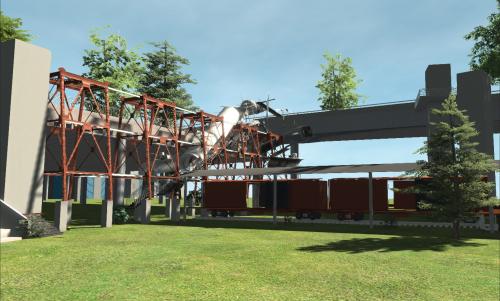 ARC DE DEFE[E]T, rendering courtesy Jonathan Bradley and Ye Bao.
ARC DE DEFE[E]T, rendering courtesy Jonathan Bradley and Ye Bao.
In Fieldshift, students Erik Jensen and Justin Richardson propose to deconstruct the freeway and reconstitute the remaining tons of concrete into a “cultural field.” Only the existing pylons will remain, at once “marking the scar” in the landscape and filling the void with opportunities for public murals and sculpture. In addition, the array of concrete will raise the ground plane several feet, allowing for an urban waterfront and marsh ecosystem that is resilient to tidal changes and sea level rise. A functional and adaptive public space emerges from the freeway remains, marking the coming challenges of climate and society in the 21st century.
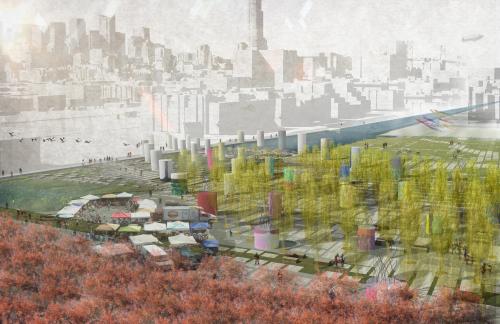 Fieldshift, rendering courtesy Erik Jensen and Justin Richardson
Fieldshift, rendering courtesy Erik Jensen and Justin Richardson
With Highlink, inspired by New York’s wildly successful Highline, Brian Vargo envisions the existing structure of the 280 overpass as a vibrant pedestrian promenade. While excited about the idea of removing the highway, Vargo laments the potential loss of the skyline view that drivers see as they enter the city. He proposes giving that vista to pedestrians and cyclists by reclaiming one overpass as a vital pedestrian/bicycle link. Vargo’s vision reconnects Mission Bay to the city, adds value to its greater surroundings, and practices the sort of progressive sustainability that gives San Francisco its unique identity.
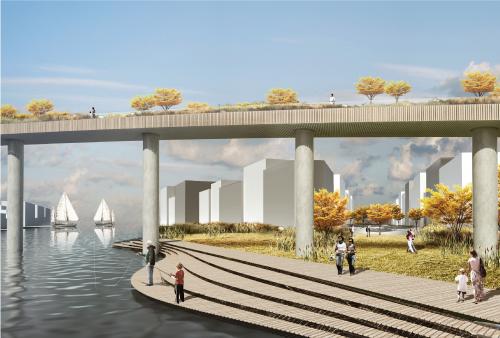 Highlink, rendering courtesy Brian Vargo
Highlink, rendering courtesy Brian Vargo
Katherine Jenkins and Parker Sutton’s Salt Sand Sieve proposes a field of “urban dunes” recalling San Francisco’s pre-modern landscape of tidal marshes, mudflats and sand dunes.The dune field provides a counterpoint to the noise of urban San Francisco; the troughs between dunes offer refuge from noise and wind. Runoff percolates through the dunes, resurfacing as pools and wetlands. The dunes also filter rainwater and channel it to gravity-fed pools along Mission Creek. These pools disrupt the unbroken geometry of Mission Creek to enable multiple access points and a variety of possible functions along the water’s edge, including launching platforms for boats, kayaks and swimmers.
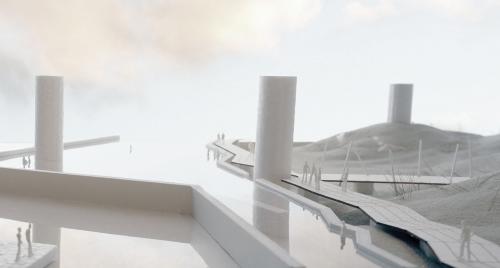 Salt Sand Sieve, rendering courtesy Katherine Jenkins and Parker Sutton
Salt Sand Sieve, rendering courtesy Katherine Jenkins and Parker Sutton
And finally, because of its unique ability to see the positive in the destructive force of an earthquake, the jurors gave special recognition to Seismic Harvest, a proposal to transform the freeway infrastructure into a community garden, commercial organic farm and waterfront development,D.IS.H’s proposal integrates earthquake simulators into the project, re-imagining them as energy harvesting systems. The plan redefines the city’s history of removing freeways to harvest a new community.
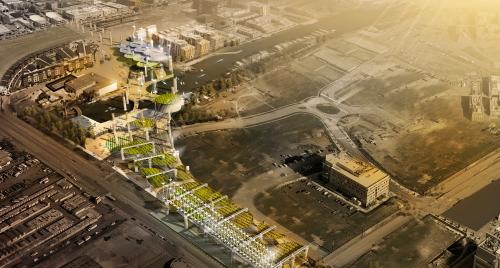 Seismic Harvest rendering by D.IS.H
Seismic Harvest rendering by D.IS.H
